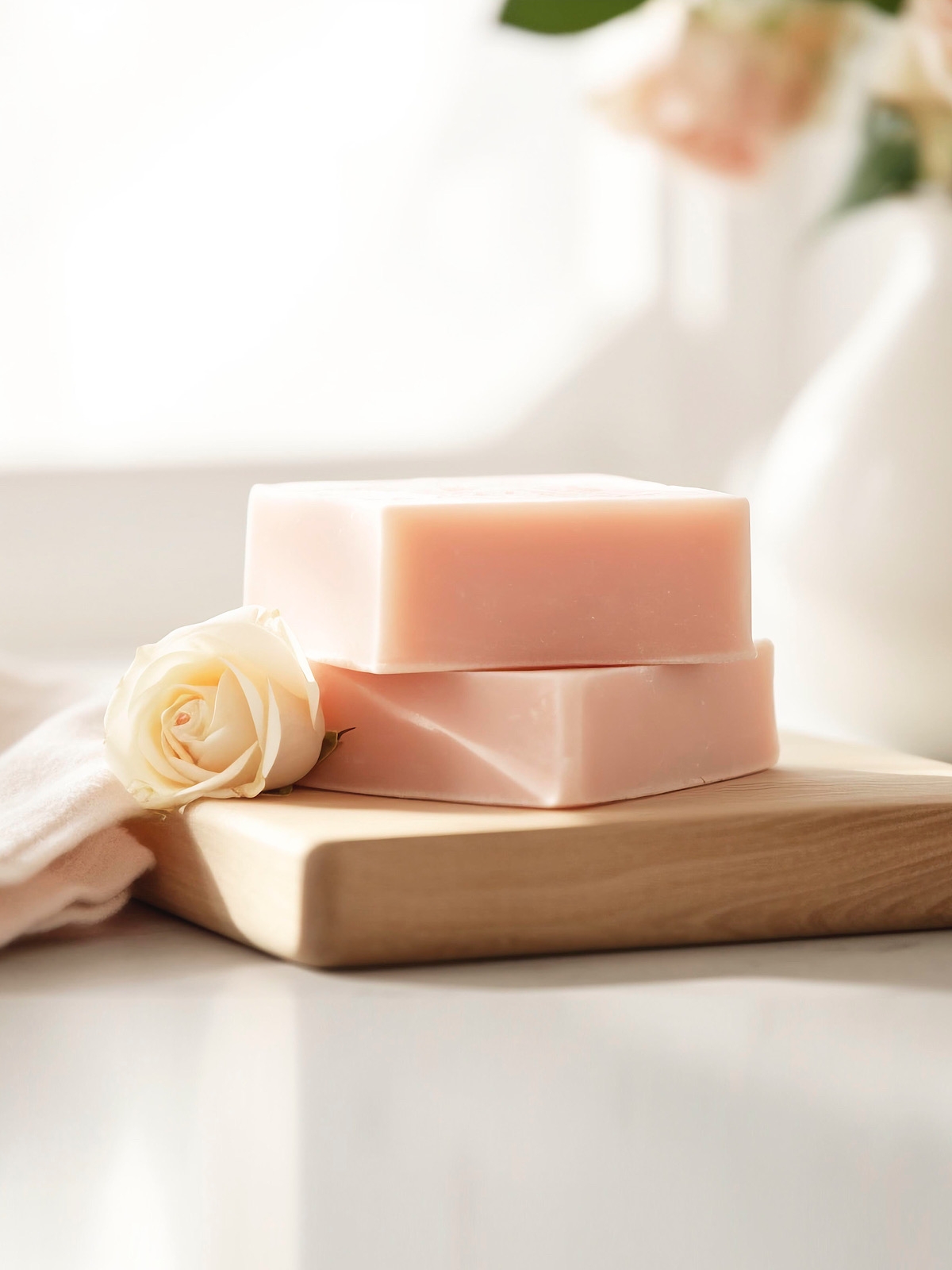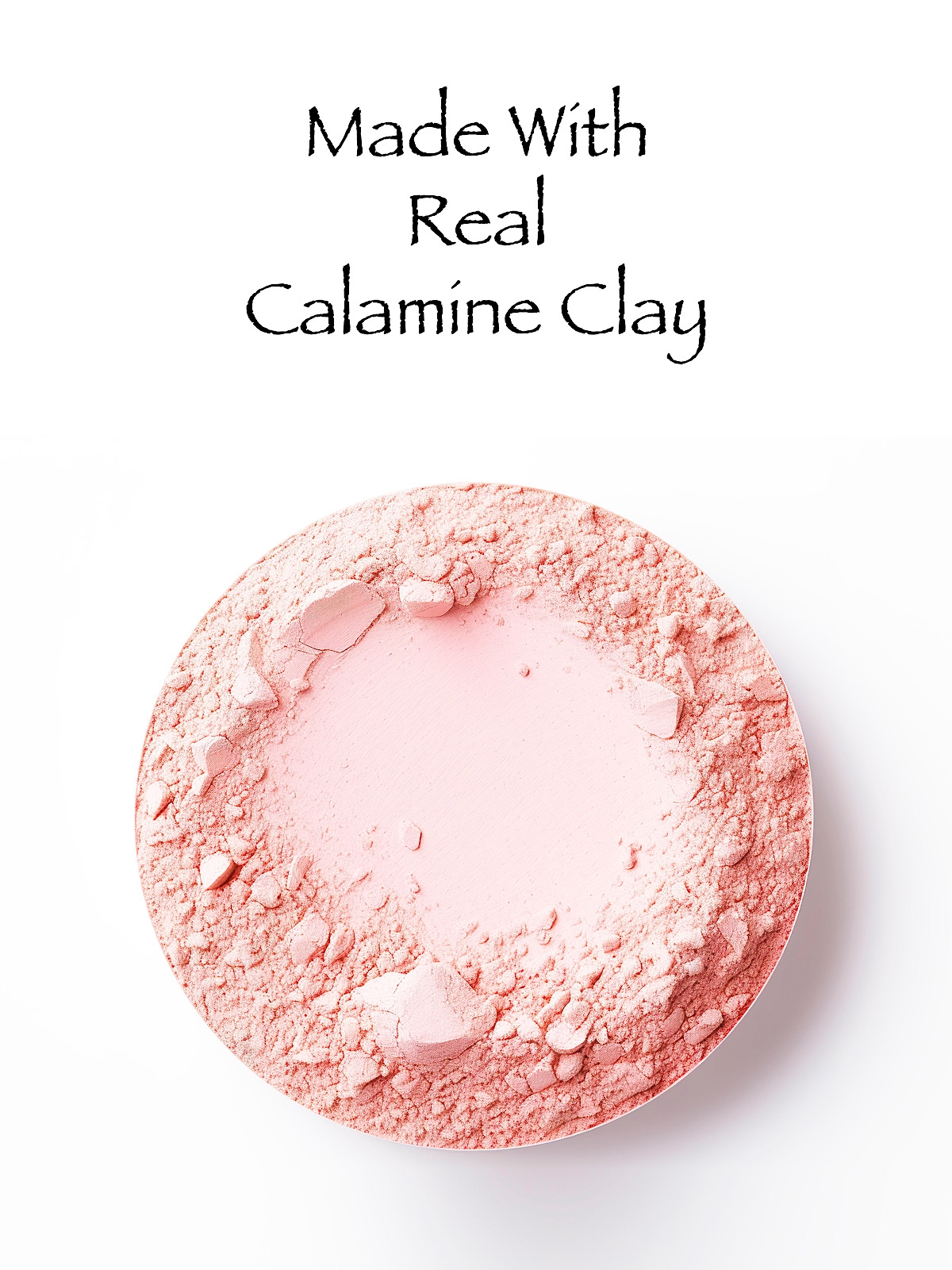







Daily pampering is a must, and luxury soaps are essential! Our creamy Calamine Soap combines soothing calamine clay with moisturizing shea butter for a truly indulgent experience. The tropical aroma of coconut, sweet limes and lavender will transport you to a place of tranquility and bliss.
Calamine is actually a clay that has been *used as a soothing agent for many years. It’s natural pink coloring provides the soft pastel shade of this soap, without the need of dyes. Calamine is naturally rich in zinc, which has been shown to be *necessary for for the production of certain skin cells.
Shea Butter has been used in Africa for thousands of years. Shea butter is very rich in fat and has been shown to have *antioxidant and anti-inflammatory properties.
Lavender Oil has been used for generations for therapeutic as well as cosmetic purposes. *Traditionally lavender oil was considered to be antibacterial, antifungal, and a relaxing agent. It was even used for burns and insect bites. Recent studies have gathered evidence that supports these claims.
Our Calamine Soap is made without dyes and has a natural pink hue from the calamine clay. It’s scented with sweet notes of coconut, sweet limes and lavender. Enjoy!
4.5oz bar
CITATIONS:
Calamine in dermatology: Gupta M, Mahajan VK, Mehta KS, Chauhan PS. Zinc therapy in dermatology: a review. Dermatol Res Pract. 2014;2014:709152. doi: 10.1155/2014/709152. Epub 2014 Jul 10. PMID: 25120566; PMCID: PMC4120804.
Zinc and Skin: Ogawa Y, Kawamura T, Shimada S. Zinc and skin biology. Arch Biochem Biophys. 2016 Dec 1;611:113-119. doi: 10.1016/j.abb.2016.06.003. Epub 2016 Jun 7. PMID: 27288087.
Properties of Shea Butter: Honfo FG, Akissoe N, Linnemann AR, Soumanou M, Van Boekel MA. Nutritional composition of shea products and chemical properties of shea butter: a review. Crit Rev Food Sci Nutr. 2014;54(5):673-86. doi: 10.1080/10408398.2011.604142. PMID: 24261539.
Properties of Lavender Oil: Cavanagh HM, Wilkinson JM. Biological activities of lavender essential oil. Phytother Res. 2002 Jun;16(4):301-8. doi: 10.1002/ptr.1103. PMID: 12112282.

I wasn't familiar with calamine clay, but the description is absolutely correct that using this calamine clay is an indulgent experience! The scent is relaxing and calming. It is another outstanding product from Afro Botanicals!
M. Q."Love yourself better than anybody else. All beauty is in you and not outside of you. God made you beautiful. Confine your affection to your own race and God will bless you and men will honor you."